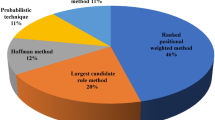Abstract
As automotive assembly systems become more complex every year, use of computer aided technology in planning stage is common. Every change in assembly system or assembly line must be validated by software engineering department so the transition in changes are smooth and without unexpected problems. Assembly systems especially in automotive industry must be easy to adjust for new production. Companies in automotive industry, especially manufacturers of final cars have production lines for several versions of one car or even for different car models. This means that production systems are complex and must be balanced for work with different set ups. Time and work flow are essential things in production lines in automotive industry. That is the reason for software solutions like Tecnomatix. Implementation of new assembly parameters are calculated by software. Looking for bottlenecks or errors in assembly processes is easier in well-made virtual models of production lines and it also faster solution. In this article will be mentioned software solutions for this kind of processes. Basic work of software will be demonstrated in example made in Tecnomatix Plant Simulate and Tecnomatix Process Simulate from company SIEMENS. Examples made in these software packages will be aimed on automotive assembly respectively production lines. Also, simulation of production robotic workplaces will be mentioned in example with use of Tecnomatix Process Simulate. As welding robotic stations in automotive production systems are essentials of whole production. Robotic stations are high investment workplaces, so it is only understanding that simulation of such robotic workplaces is needed. Use of discrete simulation software for production simulation purposes is bigger every year and it will continue in future as well. Future of assembly planning will be discussed towards the end of article.
Access this chapter
Tax calculation will be finalised at checkout
Purchases are for personal use only
Similar content being viewed by others
References
Rooks, B.: Software planning of assembly lines. Assem. Autom. 20(4), 300–304 (2000). https://doi.org/10.1108/01445150010378434
Petrila, S., Brabie, G., Chirita, B.: The Use of Tecnomatix Software to Simulate the Manufacturing Flows in an Industrial Enterprise Producing Hydrostatic Components. Institute of Physics Publishing, Bacau (2016). http://www.scopus.com/. ISSN 17578981
Plant Simulation: Product overview. SIEMENS. https://www.plm.automation.siemens.com/. Last accessed 11 Nov 2016
Sdružení MTM pro Českou republiku a Slovenskou republiku: MTM - 1[učební podklady] (2009)
Ergovia. Nástroje MTM (2015). [cit. 2016-04-25]. Dostupné na internete. http://www.ergovia.sk/metody/
Mirzapour Al-e-hashem, S.M.J., Aryanezhad, M.B., Jabbarzadeh, A.: A new approach to solve a mixed-model assembly line with a bypass subline sequencing problem. Int. J. Adv. Manuf. Technol. 52, 1053 (2011). https://doi.org/10.1007/s00170-010-2797-x
Korkmazel, T., Meral, S.: Bicriteria sequencing methods for the mixed-model assembly line in just-in-time production systems. Eur. J. Oper. Res. 131(1), 188–207 (2001). ISSN 0377-2217
Miltenburg, J.: Balancing and scheduling mixed-model U-shaped production lines. Int. J. Flex. Manuf. Syst. 14(2), 119–151 (2002). https://doi.org/10.1023/A:1014434117888. ISSN 1572-9370
Acknowledgement
The article was written as part of the Young Researcher project 1383 “Influence of selected attributes in manufacturing systems and sub-systems planning in digital environment” supported by the scientific program - Motivation and support in quality and effectivity elevation of young researchers and scientists. Slovak University of Technology.
Author information
Authors and Affiliations
Editor information
Editors and Affiliations
Rights and permissions
Copyright information
© 2018 Springer International Publishing AG, part of Springer Nature
About this paper
Cite this paper
Václav, Š., Košťál, P., Lecký, Š., Michal, D., Bako, B. (2018). Assembly System Planning in Automotive Industry with Use of Discrete Event Simulation. In: Jármai, K., Bolló, B. (eds) Vehicle and Automotive Engineering 2. VAE 2018. Lecture Notes in Mechanical Engineering. Springer, Cham. https://doi.org/10.1007/978-3-319-75677-6_44
Download citation
DOI: https://doi.org/10.1007/978-3-319-75677-6_44
Published:
Publisher Name: Springer, Cham
Print ISBN: 978-3-319-75676-9
Online ISBN: 978-3-319-75677-6
eBook Packages: EngineeringEngineering (R0)




